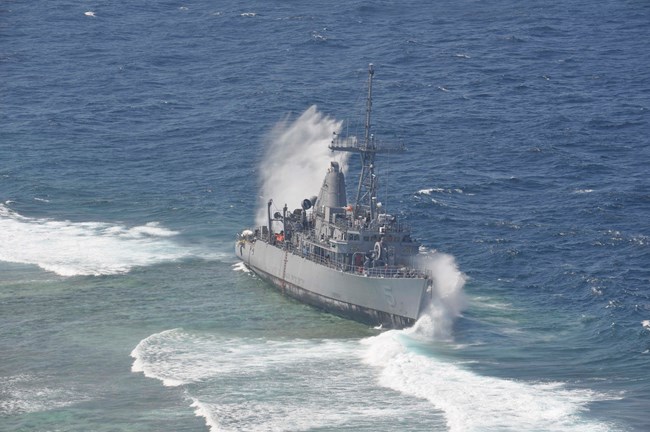Last updated: October 1, 2020
Article
The Story of an American Family Buried at St. Paul's

The story of an American family buried at St. Paul’s Church in Mt. Vernon, New York
The story of the Panno/Paladino family illustrates an interesting variety of themes in the history of this community and our country from the late 19th century to the 21st century, recalled through the recent burial of a 93-year old member of the family in the historic cemetery at St. Paul’s Church National Historic Site.
It is partly a story of the history of immigration to America. Gaetano Paladino was representative of the great wave of immigration from Italy in the late 19th century. He arrived in New York in 1899, preceding his family to measure the opportunities for livelihood, a common pattern at the turn of the century. Five years later, his wife Josephine and their children, including seven-year-old Christina, joined Gaetano in America. They were also part of a growing pattern of immigration from southern and eastern Europe that altered previous trends of entry mostly from northern and western Europe, with important ramifications for the history of the country. But Gaetano was probably just like many immigrants when he arrived in the nation’s largest city at the turn of the century, seeking decent wages in the rapidly expanding economy of industrial America, escaping the poverty and limited opportunities of his native land.
He was also part of the immigration pattern that altered the ethnic composition of Mt. Vernon, a small suburban city in southern Westchester County, New York, about 20 miles north of midtown Manhattan. Founded as a planned village in the 1850s, and settled through the New Haven railroad, Mt. Vernon’s affordable housing stock, expanding employment opportunities and location attracted immigrants and migrants. At the time of Gaetano’s arrival, many immigrants who entered the country through Ellis Island traveled on the trains north from Manhattan and exited at the first stop outside of the city, which was often Mt. Vernon, leading to the great growth in the small city’s Italian and Eastern European Jewish populations between 1900 and 1930.
The Italian immigrant found work in the local garment industry, a common employment sector for newcomers in New York. Their daughter Christina married in her teens. By 1920 Gaetano and Josephine were living with their daughter and her husband Raffaele (Ralph) Panno, who had emigrated from Italy in 1902, along with Christina’s four young children. At the time, financial concerns often caused multiple generations of a family to live in the same residence. Ralph’s employment as a chauffeur for a local hospital reflected the growing importance of the automobile. Like many immigrants, they continued to converse in their native language, Italian, and probably associated almost exclusively with other Italian immigrants in Mt. Vernon.
Their sixth child, Ralph Panno, jr. was born in July 1926, and that was when tragedy struck. His father had died of pneumonia due to complications of the flu, a leading cause of death in the 1920s, three months before he was born, at the age of 40. According to family tradition, that was why he was given the name of Raphael (Ralph), although apparently his mother couldn’t bear to call him that, so she nicknamed him “honeybunch” (or dolcezza in Italian). Within a year, both of the infant’s parents were dead, with his mother Christina dying in June 1927 of spinal meningitis at the age of 30. His parents were interred in the cemetery at St. Paul’s, the largest burial yard in Mt. Vernon. Six children were orphaned.
The family contributed three service members to the American forces in World War II. Thomas, the eldest, had joined the Navy prior to Pearl Harbor, and served as an Aviation Radioman First Class, shot down and killed in 1944, reportedly through friendly fire. Alfred served in the army. Ralph, seeking to fulfill his older brother’s service, volunteered for the Navy in 1944, at the minimum age of 18, before graduating from high school. The brown haired teen, with hazel colored eyes, stood 5' 8 1/2" tall, and weighed 155 pounds, according to the enlistment record. He served in the Pacific on three different ships, including the USS Kingfisher, a minesweeper. The New Yorker achieved the rank of Fireman 2nd Class, which carried below-deck responsibilities for the ship’s electrical circuits, in the war’s final months, helping to achieve American victory.
The post war years revealed a movement away from Mt. Vernon, their original home in America, and economic advancement, certainly two of the important social trends in America after World War II. Ralph, the veteran, relocated to New Jersey, living with his married sister, and completed his degree at a technical high school He obtained employment as a mechanical engineer, a skilled profession with good salaries that would qualify as social mobility in comparison with his father and grandfather. He met his future wife, Beatrice Anne Strassburger in New Jersey; they married in 1950, and had five children.
A final interesting chapter in the family’s American odyssey concerns the movement to Texas, paralleling the dramatic shift in America’s population from the urban Northeast to the South and West in the decades following World War II. One of the Panno children, Gary, relocated to the Lone Star State securing employment with Texas Instruments in 1979, following graduation from college. From there, several other siblings and eventually even the parents, Ralph and Beatrice, followed the movement to Texas. Ralph Panno the Navy veteran lived until June 2020, passing away at age 93, followed by burial on the family plot at St. Paul’s, with the mother whom he never really knew, and several other family members.
